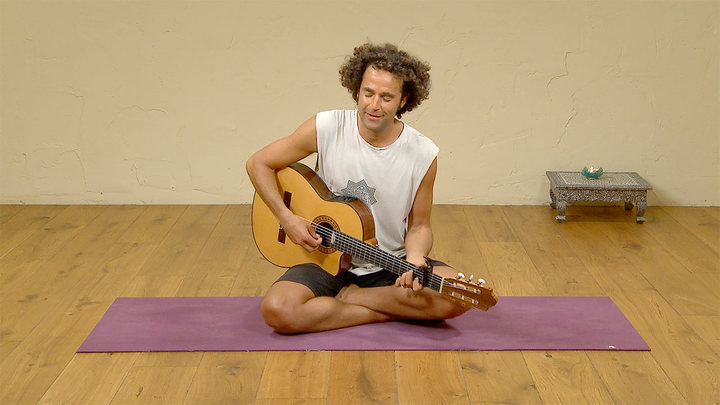The universe exists in vibration. From all the matter in the material world to our emotions, thoughts and feelings, everything is vibrating. According to yogic thought, we can also assume that Divine Energy, the myriad forces that guide the universe into existence, are also vibrating. So we could say that though the sacred and powerful art of Mantra chanting, we are harmonizing our personal vibrations with that of the Divine and entering the state of union / Yoga with Divine Vibration.
Bhakti yoga
As part of the path of Bhakti yoga, the yoga of devotion, chanting mantras is a self-less form of prayer that physiologically, emotionally and spiritually alters our vibrational state. Through singing, we vibrate the vocal chords and this resonates through the whole body. Muscles, bones, flesh and fluids all feel and receive the words. Through singing with intention, we bring our feelings out to the world and find new ways to express ourselves where others can feel them too.
One of the most common forms of chanting uses the different names of Hindu deities repeated over and over again to create a place of inner peace and union. This practice, called Kirtan, takes advantage of the repetition to help calm the mind from constant distraction, which leads to higher levels of presence. It is in the place where we are removed from our individual identity that we can feel more peace and be at one with God.
Read: An introduction to Kirtan: the songs of yoga
Traditional and modern teaching
In many traditional schools mantra chanting is a formal art to be practised under the guidance of a teacher to ensure proper pronunciation and recitation of the sacred words. Just as a specific recipe produces the same taste each time, traditional chanting utilizes the internal vibrations of Sanskrit and the various names of gods and goddesses in a specific way as prescribed in ancient texts. These classical methods can be quite challenging for Westerners.
In many modern schools, however, the emphasis is on the intention behind the words and the calling out for union that makes as equal an impact as the technique itself. With hundreds of thousands of people of many backgrounds discovering the joys of chanting, the vibrational effect of singing out loud is having a strong impact even if the exact pronunciation is missing. Many Kirtan singers begin each chant with stories or basic translations for people to have some meaning behind the chants in their own language. When we can build these associations in our minds using words we know, the intention of each chant is set and has a greater potential to make an impact.
To sing freely and loudly without judgments is liberating, and with music that supports the emotional release, the experience can also be very meditative.
In yoga schools, ashrams, festivals and other gatherings around the world, modern Kirtan singers are using Western instruments and melodies to create ecstatic Kirtan and chanting, opening up brand new feelings for practitioners. To sing freely and loudly without judgments and put a voice to the feelings inside is a very liberating act, and with music that supports the emotional release the experience can be very meditative – in both calming and exciting ways!
As with most yogic practices, finding a balance between the more traditional fixed way and the modern artistic way can be found with mantra singing. Honoring the pronunciation and the sacredness of the words we sing while letting go of the fear of doing the ‘wrong thing’ can cultivate confidence in each of us to sing our own prayers. God will receive them gratefully!
My beloved Kirtan teacher, Jai Uttal, says that “there is no difference between God and the name of God”. So each time we embark upon the journey of chanting, whether it is with classical monotonic melodies to cultivate an inner meditation or with modern upbeat music bringing an ecstatic joy, we are setting forth into the vibrational field with our own frequencies, merging with the divine and ultimately bringing us to Yoga, Union.
Join David Lurey (and the EkhartYoga choir) in his mantra classes on Ekhart Yoga. Mantra Chanting – Om Eim Saraswataye Namaha


